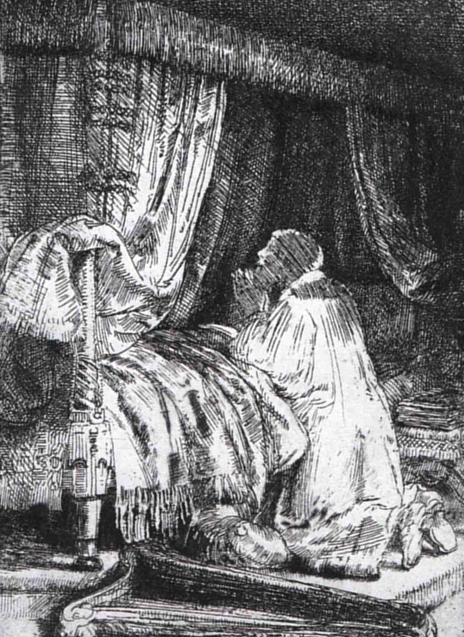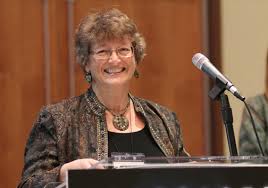Power Talking

Turning To Spirituality Series
Jewish Family Education with Candace R. Kwiatek, The Dayton Jewish Observer
In the business world, according to communication guru George Walther, Power Talking is the use of common words when speaking to create uncommonly positive outcomes.
Prayer might be regarded as Power Talking. “Blessed are You, O Lord,” the familiar opening of countless prayers intones as if it’s a magic formula compelling God to be a celestial butler or healer or shining knight. In the same vein, Rabbi David Wolpe points out, “A good deal of prayer is indistinguishable from barter. Dear God, we pray, heal my mother, and I will be good.”
Prayer is Power Talking. But for it to produce uncommonly positive outcomes, we have to discard the celestial servant and barter paradigms and adopt a different perspective on prayer.
Language is part of the problem. The roots of prayer are found in Greek thought about spirituality, which divides the world into two opposing realms: spiritual and material, writes Rabbi Micah Greenstein.
Greek and Latin prayer vocabulary reflect notions of supplication, pleading, sacrifice, and surrender: leaving the material world behind in order to connect with God.

However, “In classical Hebrew Jewish spirituality,” Greenstein explains, “there is only one world that is simultaneously material and spiritual.”
The Lubavitcher Rebbe explains that instead of supplication, the Hebrew verb for prayer l’hitpalel means to examine oneself, one’s role in the universe, and one’s relationship to God.
Prayer “is an expression of the desire to be the passive recipient of a grant bestowed from above,” the Rebbe continues. Tefillah is an expression of the soul’s upward yearning while simultaneously a mechanism for refining and elevating the physical self to become more holy.
“Help us find the courage to make our lives a blessing,” Debbie Friedman’s setting of the Misheberach (Healing) prayer beseeches: simultaneously a request for God to be our partner and an inspiration for us to act.
So how does tefillah actually work? For some, like Tevye the dairyman, it’s simply conversation with God. For others, it’s the language of meditation, a song for the spirit, or conversation in community.
Rabbi Lawrence Hoffman describes tefillah as “a delivery system that imparts Judaism’s canon of great concepts and moves us to live our lives by them.”
The medieval philosopher Nachmanides suggests that its content is designed to improve human character and inspire more God-like behavior.
Commentator Dennis Prager concurs, noting that tefillah is a vehicle for awakening and expressing gratitude, the primary foundation of happiness and goodness.
“Like water smoothes jagged stone, regular immersion in prayer gradually wears away the jagged edges of our character,” writes Lord Rabbi Jonathan Sacks. “Slowly, we come to think less of the “I,” more of the “We”; less of what we lack than of what we have; less of what we need from the world, more of what the world needs from us. Prayer is less about getting what we want than about learning what to want…Prayer changes the world because it changes us.”
If tefillah has the potential for so many uncommonly positive results, why aren’t more Jews regularly engaged in it? What are the barriers? It’s a question that brings us back to the Greeks whose bifurcated worldview we’ve adopted.
“What use is prayer?” congregants ask Rabbi Mike Comins, expecting tangible results. After all, Judaism’s emphasis on a fixed liturgy in a fixed location at a fixed time in a prescribed community has securely rooted it in the material world.
According to Greek tradition, it should therefore reflect material values: practical and productive. But, Comins notes, “People don’t think prayer is answered.”
When it doesn’t work as expected, it’s discarded in favor of other worldly activities with more tangible benefits.
Personal and mystical, spirituality is a whole different matter. “I’m spiritual, but not religious,” many moderns assert. “I don’t need structured prayer. I prefer to pray on my own time, in my own words, when I’m moved to do so.”
In the tradition of Greek thought, spirituality is heaven-centered and completely separate from the material world.
Appearing first in Genesis is the contrasting Jewish worldview, that the material world and the spiritual world are a single unity.
The human (worldly) is made in the image of God (spiritual) and becomes a living soul (spiritual). It’s a knowledge gap that helps to explain why we don’t understand or engage in prayer very often.
Here’s my prescription. Teach the Jewish worldview. Teach tefillah by demonstrating how it acknowledges and cultivates our spiritual and our physical selves.
Teach why there is fixed prayer and how to find one’s personal voice in it. Teach why and how to create spontaneous prayer, encourage it, and find meaningful places to give voice to it.
Jewish prayer is Power Talking. It’s a conversation with God. It’s a conversation within yourself. It’s a conversation in community.
And, as Rabbi Wolpe points out, it does work: “If we rise from our prayer as better human beings than the ones who sat down, our prayers have been answered.”
Literature to share
Matzo: 35 Recipes for Passover and All Year Long by Michele Streit Heilbrun and David Kirschner. Whether you’re in the “matzah for Passover only” or the “year-round matzah” camp, you’ll love this book. Ordinary grocery ingredients and clear recipe directions make traditional fare like matzah balls and oven-fried chicken, and modern cuisine, including matzah nachos with pickled jalapeños and tiramisu, a pleasure to create. Peppered throughout the book are black-and-white images of the familiar Passover brand Streit’s in its early years as well as informative explanations of some key elements of the Seder and Passover cooking traditions.
Dear Girl by Amy Krouse Rosenthal and Paris Rosenthal. Released just after the author’s passing, this collaborative effort with her daughter is a series of tiny love letters that encourage creativity and friendships, offer encouragement and advice, and celebrate being a unique individual. The lively but simple illustrations are captivating, sparking conversation on each page. A winning picture book for preschoolers, Dear Girl is also a delight for adults — and the messages apply to boys, too.
To read the complete February 2018 Dayton Jewish Observer, click here.



